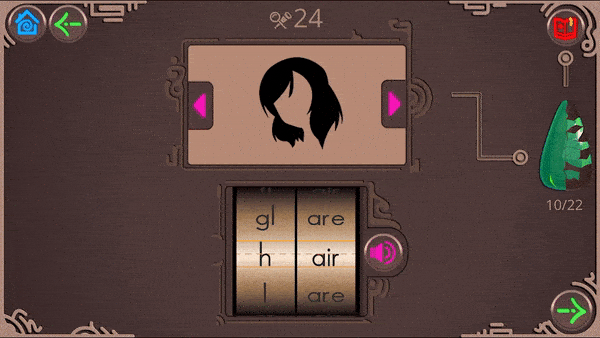How to Improve English Pronunciation (For a Natural-Sounding Accent!)

Imagine you’re out for dinner at a restaurant with your friends.
The waiter comes over and asks you:
“What can I get for you this evening?”
Let’s say you want the steak tartare with Worcestershire sauce, but you’re not sure how to pronounce it.
You might be afraid of making a mistake in front of your friends, and this prevents you from ordering with confidence.
Today, you’ll discover the real secret to improving your pronunciation, reducing your accent, understanding the overall flow of English, and how to speak like a native English speaker… All by yourself, and no matter where you live in the world.
Table of Contents
- Part One: Understand the “Pieces” of English Pronunciation
- Part Two: Getting the “Flow” of English
- How to Improve Your Pronunciation, Starting Today
Part One: Understand the “Pieces” of English Pronunciation
To understand the “big picture” and “pieces” of pronunciation, remember how you learned your native language.
When you were a child, you had to hear and understand the messages you received from your parents.
You also heard a variety of different speakers — and pronunciations!
- Your parents
- Your grandparents
- Your siblings
- Your cousins
- Your teachers
- Your friends
- Movies and cartoons
- etc…
This gave you a feel for the overall “flow” and “sound” of your native language, systematically taught you to distinguish sounds, and helped you develop the perfect voice and accent for you.
Unfortunately, many English students have only ONE teacher. This can put a lot of pressure on students to say everything like their teacher, making their pronunciation sound forced and unnatural.
Non-native English teachers can also have their own problems, commonly mispronouncing words. And even native English teachers typically speak too slowly and unnaturally, often using words that natives don’t.
So, many English students have limited exposure to real English, aren’t learning systematically, and lack the VARIETY they need to develop proper accent and intonation.
We’ll cover the details of how to develop a great English voice in this article. But the real secret to excellent pronunciation I learned from teaching people how to speak English fluently is:
You cannot separate pronunciation from listening. Great LISTENING ability automatically leads to natural pronunciation!
Here’s how to develop natural pronunciation in English:
Listen Actively With “Sound Transitioning”

Let’s begin with the foundation of great pronunciation: individual sounds.
If I play you a note on the piano, and then I ask you to play the same note… how would you do it?
If you don’t know how to play the piano, you would likely start pressing keys until you find the right note.
BUT…
As you test and try each note, you’re also learning:
- How notes relate to each other
- Scales
- Octaves
- Pitch
This active listening through experimentation – what I call “sound transitioning” – trains you to recognize and distinguish sounds. And you will not speak correctly if you can’t hear sounds correctly.
Remember: This is how you learned your native language as a child.
So, you should test, try, and mimic sounds the same way in English.
Don’t try to sound perfect the first time. Just start with a sound you CAN make, and then “transition” by moving your mouth, tongue, and voice in different ways until you naturally reach the sound you want to make.
And in case you’re wondering… yes, you’re doing this alone.
Keep shooting for the target and you will hit it eventually. Then you’ll know exactly how to make the right sound whenever you like!
<!-- start Omniconvert.com code -->
<link rel="dns-prefetch" href="//app.omniconvert.com" />
<script type="text/javascript">window._mktz=window._mktz||[];</script>
<script src="//cdn.omniconvert.com/js/u169266.js"></script>
<!-- end Omniconvert.com code -->Fluent for Life GUARANTEES English fluency for intermediate to advanced English learners.
If you KNOW a lot of English, but struggle to SPEAK…
Learn the Sounds of English, Systematically
Next, many learners tell me that pronunciation rules are inconsistent. There are a lot of variables, and it can feel like English pronunciation makes no sense!
Well, what if I told you that pronunciation rules work over 80% of the time?
The truth is pronunciation is actually a lot easier than most learners think. And when you understand the whole system the same way natives do, you know how everything works together.
You’ve already learned that you can produce the correct sound by using “sound transitioning.” So now let’s look at how to learn English sounds systematically.
Phonics: The Sound Rules of English
English words are divided into two types: those that can be pronounced with rules, and those that break rules.
The sound rules of English are known as “phonics.” Words that break the rules are known as “sight words,” since they must be remembered by how they look.
We’ll cover these “rule-breakers” in a moment. But it’s possible to quickly learn the system of both kinds of words the way native children do, step-by-step.
Here are some related words that do follow phonetic rules:
- bag
- big
- bug
Know the phonetic rules for these words, and you know how to say them. It’s really that simple.
But since it’s easier to learn these rules by hearing them, I created an app called Frederick to develop your listening and pronunciation in the right sequence.

It’s very important to learn sounds in the right order, rather than with YouTube videos that teach you the pronunciations of random words, because the wrong order can confuse or overwhelm you, and slow your progress.
This is why Frederick takes you from the alphabet to advanced words like “synthesis” and “apocalypse,” one step at a time. Just like with the notes on a piano, you can systematically compare sounds as fast as possible with Frederick. Plus, you can use “sound transitioning” as you compare sounds in the app!
Learning each letter’s sounds, and how they all work together, forms a strong and memorable connection in your mind between words and sounds.
Additionally, this gives you the same training you’d get from a personal pronunciation coach when you want to remove any accent or find the words you need help with. But this training is unlimited in Frederick, and you can access it whenever you like!
Sight Words: The Pronunciation “Rule-Breakers”
Roughly 20% of words are SIGHT WORDS. Remember that these words break phonetic rules, and you remember how they sound by seeing them.
For example:
- A word where pronunciation rules apply would be — “THANK.” We can “decode” the rules of this word as “th-a-nk.”
- A sight word would be — “THE.” The pronunciation of “th” does follow a rule. Yet the “e” sounds different from what we might expect. So we just have to remember how to say the word as a whole.
But don’t worry… You’ll hear, see, and use the most common sight words so often that you’ll learn them automatically.
Again, Frederick teaches you the rules of phonics AND sight word exceptions.
Part Two: Getting the “Flow” of English
Now that you know how to learn individual sounds, it’s time to start blending words so you speak more like a native.
Of course, Frederick helps you do this with many naturally spoken sentences.
But let’s look at some examples to see how sounds change when we blend words together.
Learning Phrases, Contractions, and Sound Blending

You’ll sound like a robot if you pronounce words individually, or too clearly. This common mistake is called “over pronouncing” words.
Instead, you can speak the way natives do by learning English phrases. An example of a phrase would be:
“As opposed to…”
It’s a very polite way of saying “not this, but that.”
However, when native speakers say the phrase, it sounds more like: “aza pose to…”
Even if you say this blended speech slowly, you’ll still sound more like a native! :)
Natives also use contractions when they speak, like this:
I will go — is “textbook,” formal English.
But natives almost always use the contraction — I’ll go.
And when natives speak quickly, it sounds more like — algo.
The more examples you get, the more you will develop your “sense” for when to blend sounds.
But now let’s take this a step further by giving you the same variety of examples that natives get.
Fluent for Life GUARANTEES English fluency for intermediate to advanced English learners.
If you KNOW a lot of English, but struggle to SPEAK…
Take Your Pronunciation to the Native Level
It’s finally time to take your English pronunciation to the highest level, and have people asking you if you’re from an English-speaking country! ;)
Remember that we each have a unique voice and accent. No two English speakers sound the same. So your goal should be to find the perfect voice FOR YOU in English, which will help you speak comfortably, and feel much more confident in conversations.
The following technique will help you improve your listening and pronunciation the native way. You’ll listen to different examples of the same speech. (This is one kind of what I call Naturally Varied Review.)
Listen to these three versions of The Beatles song “Help”:
- The original
- The punk version — from the movie “Yesterday”
- The country version — performed by Miley Cyrus
You can do this exercise with any song, speech, or topic that interests you.
This method will not only help you improve your pronunciation, but it’s also the best method for learning English that improves EVERY aspect of your fluency!
How to Improve Your Pronunciation, Starting Today
Remember that you can’t separate pronunciation from listening.
Pronunciation is key, and here’s how you improve it:
- Start with the basics by practicing Sound Transitioning, phonics, and sight words. You can do all three with Frederick.
- Then learn phrases and how natives blend words together. Do this by listening to a variety of native speakers saying the same thing.
Beyond pronunciation, if you want to guarantee improvement in your English fluency, then check out Fluent For Life.
This unique program has hundreds of examples of native speakers from all over the English-speaking world to help you develop a natural English accent. Its easy-to-follow structure teaches you English like a native speaker, and it guarantees better speech in the next 30 days or less.
Additional English Language Learning Reading:
How to Get Fluent Without Living in an English-Speaking Country
100 Commonly Mispronounced Words (And Right Pronunciation)
How to Sound Like a Native English Speaker: 7 Tips for Better Pronunciation
